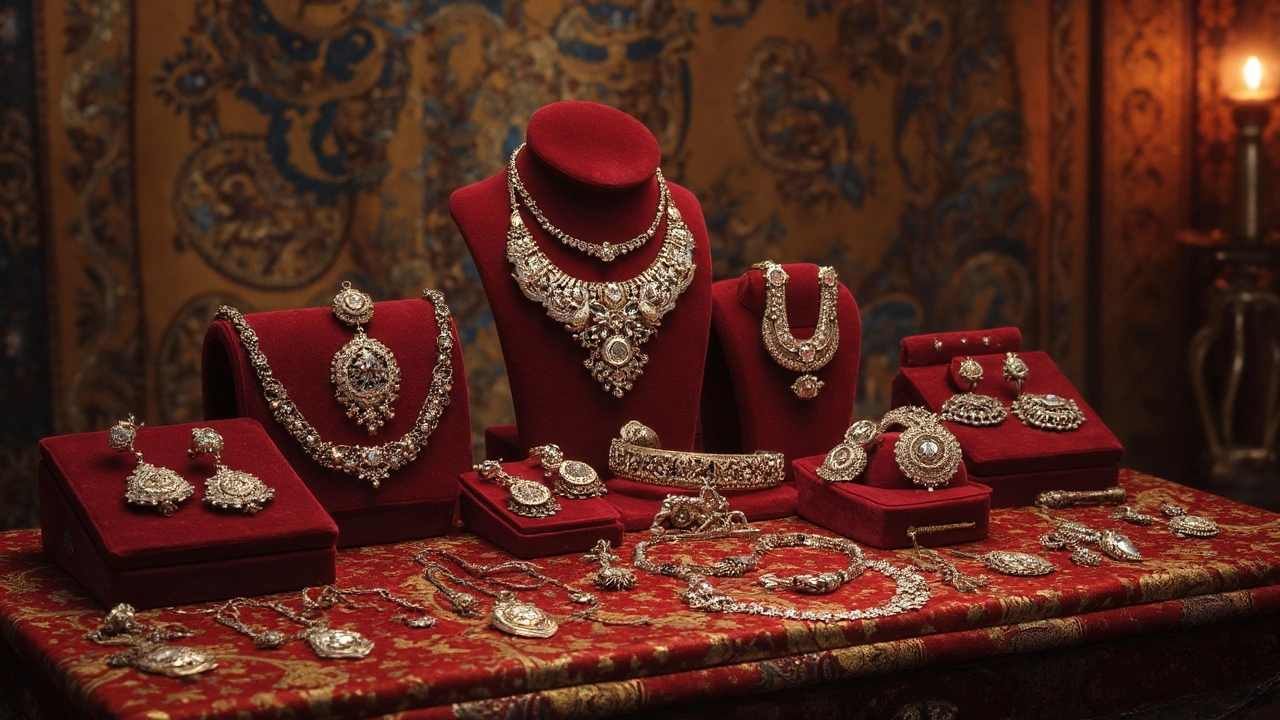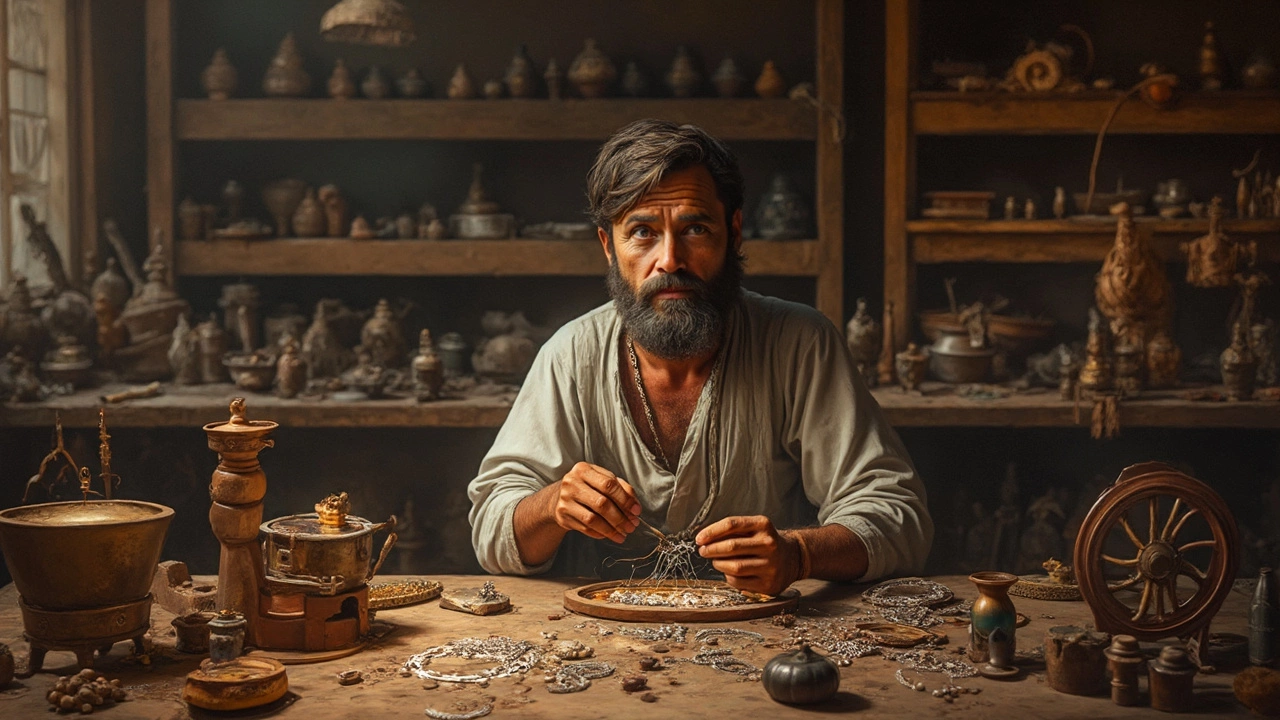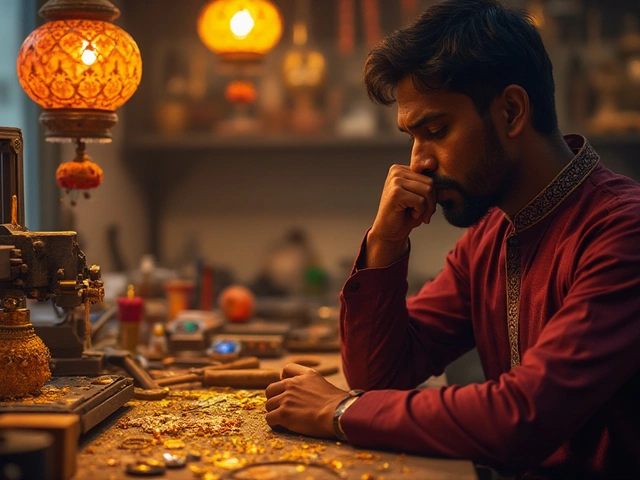
If you're rummaging through an antique store or an old jewelry box, you might stumble across a piece stamped with '833'. Ever wonder what exactly that means? Let's break it down.
The number '833' on a piece of jewelry isn't just random. It's actually quite informative. This mark tells us that the piece is composed of 83.3% silver. While it's not as pure as the more recognizable sterling silver, which is 92.5% silver, it's still precious and often found in antique jewelry.
This specific silver composition was popular in various European countries centuries ago, favored for its durability and distinctive look. The slight duller tone compared to sterling can give antique pieces a unique, vintage charm. Plus, these pieces are often quite the conversation starters for collectors and enthusiasts alike.
- What Does 833 Mean?
- History of 833 Silver
- Identifying 833 Jewelry
- Tips for Collectors
- Caring for 833 Jewelry
- Valuing Antique Silver Pieces
What Does 833 Mean?
When you see an '833' stamped on a piece of antique jewelry, it tells you about the silver content and quality of that piece. Basically, it's a purity mark. The number signals that the jewelry is made of 83.3% silver, mixed typically with 16.7% of other metals like copper. The remaining metals are added for strength, because pure silver is too soft for most practical uses.
The Importance of Silver Content
So why does 833 matter? It's a hallmark of authenticity, especially for antique jewelry. Back in the day, this was particularly common in Europe, where crafting with different silver purity levels was quite the norm. Pieces with the 833 mark are often older, dating back to times when different countries had their own standards for silver jewelry.
In the world of jewelry, 92.5% for sterling silver has become a common standard. But before that swept across the globe, 833 silver was widespread in places like Germany, the Netherlands, and Scandinavian countries. The slightly lower silver content gave artisans more wiggle room to create intricate designs without compromising durability.
How Does It Compare to Sterling Silver?
It's like talking about different grades of chocolate—dark chocolate versus milk chocolate. An 833 piece won’t have the same brightness as sterling silver due to its lower silver content, but it holds a unique charm, a bit like how milk chocolate offers a different, yet divine, taste experience.
- Antique Jewelry: 833 is a favorite among vintage collectors for its historical value.
- Durability: The added metals make 833 pieces more durable for everyday wear.
- Research the current market value of antique jewelry with similar characteristics.
- Consider consulting a jewelry appraiser, especially for high-value pieces.
- Don't be afraid to negotiate. Prices can often be flexible, especially in antique shops.
- Use a cleaning cloth: Polishing cloths designed for silver are gentle and effective.
- Avoid harsh chemicals: They can damage the surface, so steer clear of bleach or ammonia-based cleaners.
- Soft bags or cloth-lined boxes are ideal; they prevent scratches and minimize contact with air, which can speed up tarnishing.
- Keep pieces separate: Especially when made of different metals. This prevents them from reacting with each other.
- Wear with care: Try not to wear your jewelry while swimming or bathing. Chlorine and harsh soaps can affect the patina.
- Inspect regularly: Every so often, check for any loose settings or wear. If anything looks off, it might be worth a visit to a jeweler.
With such a rich history embedded in each piece, understanding what 833 means not only helps when adding to your collection but also brings a deeper appreciation of the artistry involved in crafting these stunning pieces.
History of 833 Silver
Stepping back in time, the use of 833 silver reveals a fascinating chapter in the history of metalwork and jewelry. This specific alloy was notably popular in several European countries, including Portugal and Germany, especially during the 19th and early 20th centuries.
The European Touch
In Portugal, 833 silver became a hallmark of their unique, often intricate designs. Portuguese artisans opted for this alloy not just for its structural benefits, but also for its ability to beautifully showcase detailed craftsmanship.
Meanwhile, in Germany, using 833 silver became a practical standard during times when silver was costly. Jewelers needed a balance of affordability and beauty. The metal provided just enough sheen and malleability to create stunning pieces without the prohibitive price of higher-purity silver.
Why 833 Silver?
The choice of 833 wasn't just about cost. It was also about function. The addition of 16.7% of other metals, usually copper, gave the alloy a toughness that pure silver lacks. This durability meant that pieces could withstand daily wear better without compromising on looks.
Interestingly, during certain periods, the cultural and economic climates made 833 an attractive choice. For instance, during and after wartime, many households considered it a luxury to own any silver at all, so 833 became a cherished alternative.
The Evolution
Over time, global standards shifted towards the now more common 925 sterling silver. But 833 still holds a valued place in the world of antique jewelry. Collectors and history enthusiasts often seek out these pieces not just for their beauty but as a testament to the resourcefulness and artistry of past metalworkers.
So, next time you come across a piece of antique jewelry with the 833 mark, think about the stories and hands it passed through over the years. There's a legacy in every piece, waiting to be rediscovered.
Identifying 833 Jewelry
Spotting an 833 silver mark can be like finding a small piece of history. But how exactly do you identify it? Here's a guide to help you out.
Look for the Mark
The simplest way is to search for the stamp. Look at the back or underside of the piece. Antique pieces often have the mark engraved in an inconspicuous location to not disrupt the design.
Examine the Design
Many antique jewelry pieces with the 833 mark have intricate designs typical of their era. Think ornate patterns or hand-crafted details that aren't usually found in modern designs.
Check the Era and Origin
The popularity of 833 jewelry was largely in Europe, particularly within Germany, Portugal, and the Netherlands. Understanding the historical context can give clues. A piece with a maker's mark and a 19th-century style might very well be an authentic 833 item.
Use a Magnifying Glass
Some marks might be worn or faint due to age. A magnifying glass can help reveal those hidden details. Plus, it’s a handy tool for spotting other marks that might indicate the manufacturer or date.
Consult an Expert
If you’re still unsure, it might be worth consulting a jewelry expert or antiques appraiser. They can verify the mark and give you more insights into the piece's value and history.
Whether you’ve got an 833 treasure or just diving into the world of antique jewelry, recognizing these marks can be a rewarding experience. It connects you to a period where craftsmanship spoke volumes.

Tips for Collectors
Diving into the world of antique jewelry, especially those marked with '833', can be both thrilling and a little daunting. But don't worry, I'm here to simplify things.
Know Your Marks
Before snagging that piece labeled 833 silver, double-check the markings. A magnifying glass can be your best friend here. Look for stamps or engravings beyond just '833'. They might reveal the country of origin or the jeweler's mark.
Study the Style
Different eras have distinct design elements. Being able to identify these can give you clues about the age and authenticity of the piece. From Victorian to Art Deco, each style tells its own story.
Be Cautious with Pricing
Where to Buy
While flea markets and antique fairs are treasure troves, online marketplaces can also be valuable hunting grounds. Just ensure the seller has good reviews and offers returns.
Keep an Eye on Condition
Inspect closely for any damage or repairs. Minor imperfections might not deter collectors, but they can affect the piece's value. Don’t hesitate to ask about previous restorations.
Network with Other Collectors
Join forums, attend events, or be part of a local club. These connections can offer insights, trading opportunities, and firsthand advice.
Being part of the antique community will enrich your collecting journey, helping you navigate the thrilling world of '833' marked treasures with confidence.
Caring for 833 Jewelry
Antique jewelry like 833 silver needs a little TLC to stay in great shape. Because it's not as tarnish-resistant as higher purity silver like sterling, it can develop a unique patina. However, you may want to keep it looking its best by following some simple care tips.
Regular Cleaning
Keeping your antique jewelry clean is key. Avoid the urge to scrub hard. Instead, use a mild soap and warm water. Soak your piece for a few minutes and then use a soft cloth or brush to gently remove any grime. Rinse it thoroughly, then dry immediately with a clean cloth to prevent water marks.
Storage Tips
Proper storage can make a big difference in preserving the look and integrity of your jewelry.
Handling and Maintenance
Always handle your 833 silver jewelry with clean, dry hands. Oils and dirt from fingers can leave residue.
With a little diligence, your 833 silver can shine brightly for years, maintaining its place as a cherished part of your collection.
Valuing Antique Silver Pieces
When it comes to assessing the worth of antique silver pieces, there are a few key factors you need to consider. Understanding these can help you better appreciate both the sentimental and financial value of your finds.
Look for the Mark
First things first, you'll want to confirm the 833 silver mark and any other stamps. These markings not only tell you about the silver content but can also provide clues about the piece's origin and age. For example, older pieces with a well-worn logo might fetch a higher price due to their historical value.
"A piece of jewelry is often appraised in relation to its historical significance and the story it tells, not just the material it's made from," says renowned antique expert, Emma Caldwell.
Condition Matters
Condition is crucial. Even if you're dealing with a beautiful design, damage or heavy wear can decrease its value. Minor tarnishes are expected and can often be polished away, but keep an eye out for any major dents or repairs which might devalue the item.
Compare Similar Items
Checking online platforms like auction sites or antique forums can help you gauge market value. Look for similar items in terms of style, era, and materials. Ensure you're comparing apples to apples—an ornate Victorian piece might be worlds apart in value from a simple 20th-century design even if they both sport an 833 mark.
Consult Professionals
If you're serious about getting an accurate valuation, consider reaching out to professional appraisers. They have the expertise to authenticate and evaluate your piece, factoring in unique details that might go unnoticed otherwise. Plus, they can often shed light on specific historical context which might elevate the piece's worth.
Here's a simple breakdown of factors influencing antique jewelry prices:
| Factor | Influence on Value |
|---|---|
| Age | Older pieces generally hold more value. |
| Rarity | Unique designs or limited production increases worth. |
| Condition | Better preserved items are more valuable. |
| Current Market Trends | Trends can spike or lower demand-driven value. |
If you're holding an antique piece that is marked with the 833, you're in luck. Not only do you have a slice of history but potentially a valuable asset if you decide to part with it.


